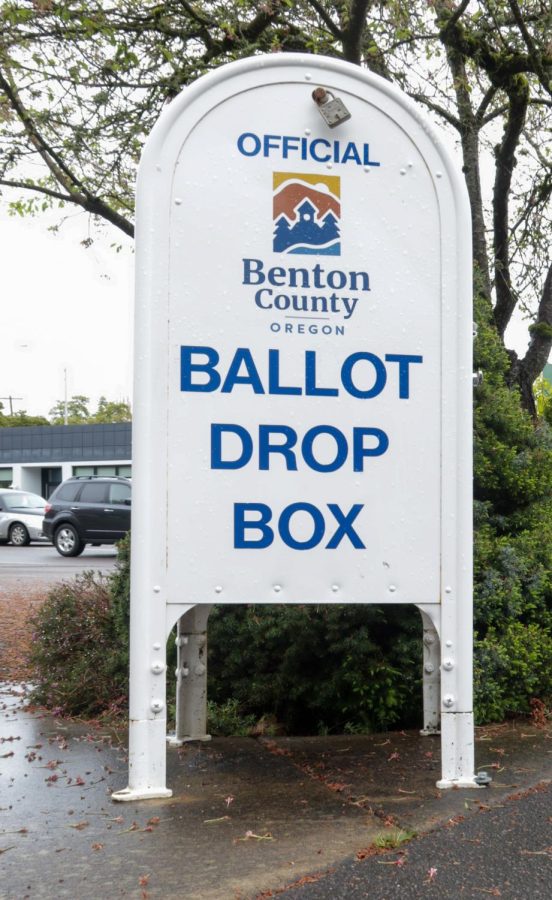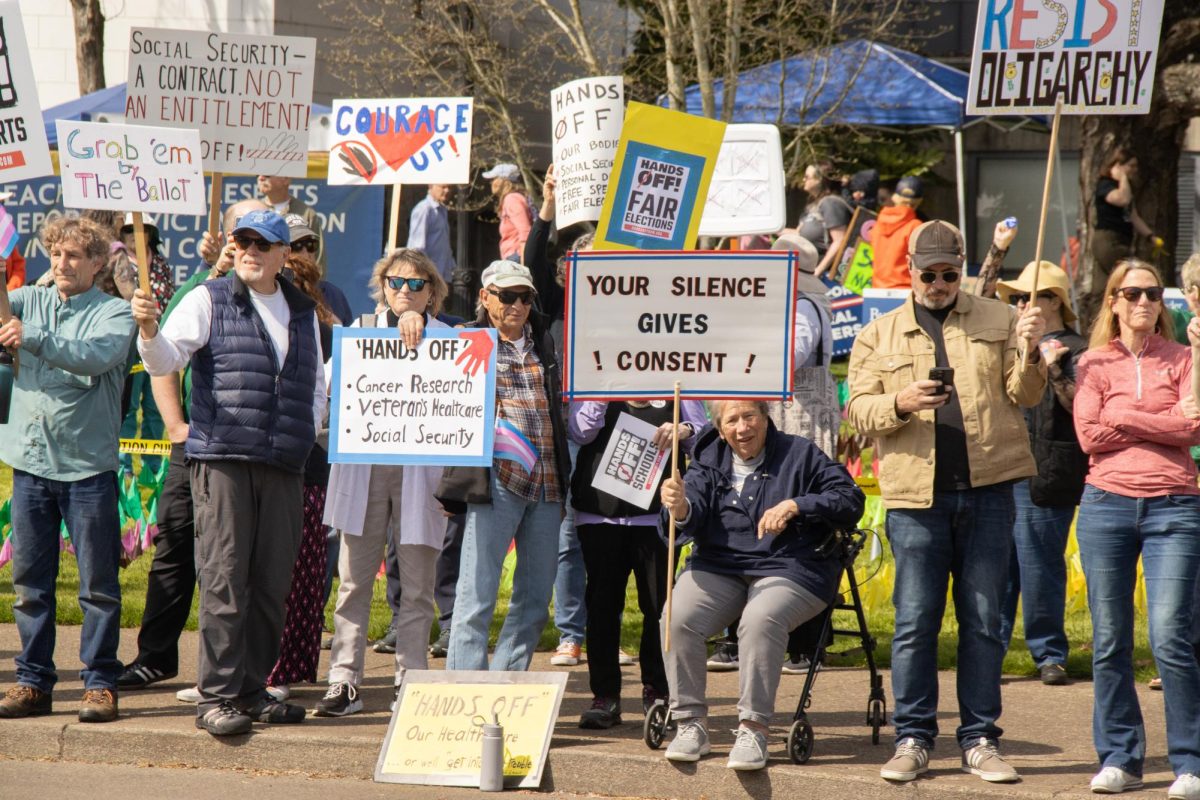Oregon State University students and community members gathered in the Memorial Union on election day to watch the last days of the presidential race unfold on the big screens.
The Election Day Coverage event was held from 8 a.m. to 9 p.m. on this Election Day, Nov. 5 in the MU Horizon Room.
Students dropped in to witness the final stretch of the race between Donald Trump and Kamala Harris. Both screens in the room played two news outlets each, periodically switching between Fox, CNN, MSNBC, Associated Press, C-SPAN and more.
To the disappointment of a few audience members, the audio from the networks was muted and replaced with calming study music.
People filtered in and out to grab a snack, sit with friends or just catch a glimpse of the election between classes.
“I came because I thought there might be a sense of community. But at some surprise, few people are here,” said Jacklyn Brant, a 73-year-old retiree.
Brant began voting when she was 21 years old, only a year before Roe v. Wade passed in the United States Supreme Court.
Brant said she was in disbelief when Roe v. Wade was overturned in 2022. She said a “woman’s right to choose” was one of her primary concerns in this election.
Harris supporters who attended the event shared similar key policy issues including abortion, economic policy and the environment.
Cadin Beach is a first-year mechanical engineering student who attended the watch party later in the evening. As a first-time voter, Beach voted for Trump, saying he approves of Trump’s economic and immigration policies.
Beach said Harris didn’t seem like a strong candidate when compared to previous Democratic candidates.
“Nothing in her term as Vice President really showed her to be a strong leader in my eyes, and that’s important to me,” Beach said.
The room began to fill up around 4 p.m. when early counts started to roll in from eastern states, including the battleground state of Georgia.
Just over 15 students sat at tables talking amongst each other or working on their laptops while predictions trickled in. The atmosphere was calm but anticipatory.
Third-year psychology major Jonah Davison closely monitored electoral data on his laptop while at the watch party. Despite being a registered Democrat, Davison voted for third-party candidate Peter Sonski of the American Solidarity Party.
Davison said there is a lot of uncertainty in this election, and that his choice was partially driven by a dislike and distrust of both Harris and Trump. He said that he did not sleep well the night before election day and felt jittery the day of.
Feelings of uncertainty were heightened by how tight the results were expected to be, with recent polls showing a nearly 50-50 split between Harris and Trump nationwide.
Brant described the race as “too close to tell,” and said she was nervous.
“I really don’t pay a lot of attention to the polls,” Brant said. “When Trump won that year (2016), they were really off.”
Attendee Nate Johnston, a third-year computer science major and Harris voter, expressed worry about Trump possibly winning the electoral vote and losing the popular vote as he did in the 2016 presidential election.
Polling data in 2016 suggested Hillary Clinton would prevail over Trump, leaving many Americans stunned when Clinton lost the electoral vote.
Brant said she voted for Clinton in 2016. “I was devastated. Devastated,” Brant said about Clinton’s loss.
Towards the end of the night, many in the room, including Davison, who was still keeping a close eye on the electoral map, were under the impression that all signs pointed towards a Trump victory.










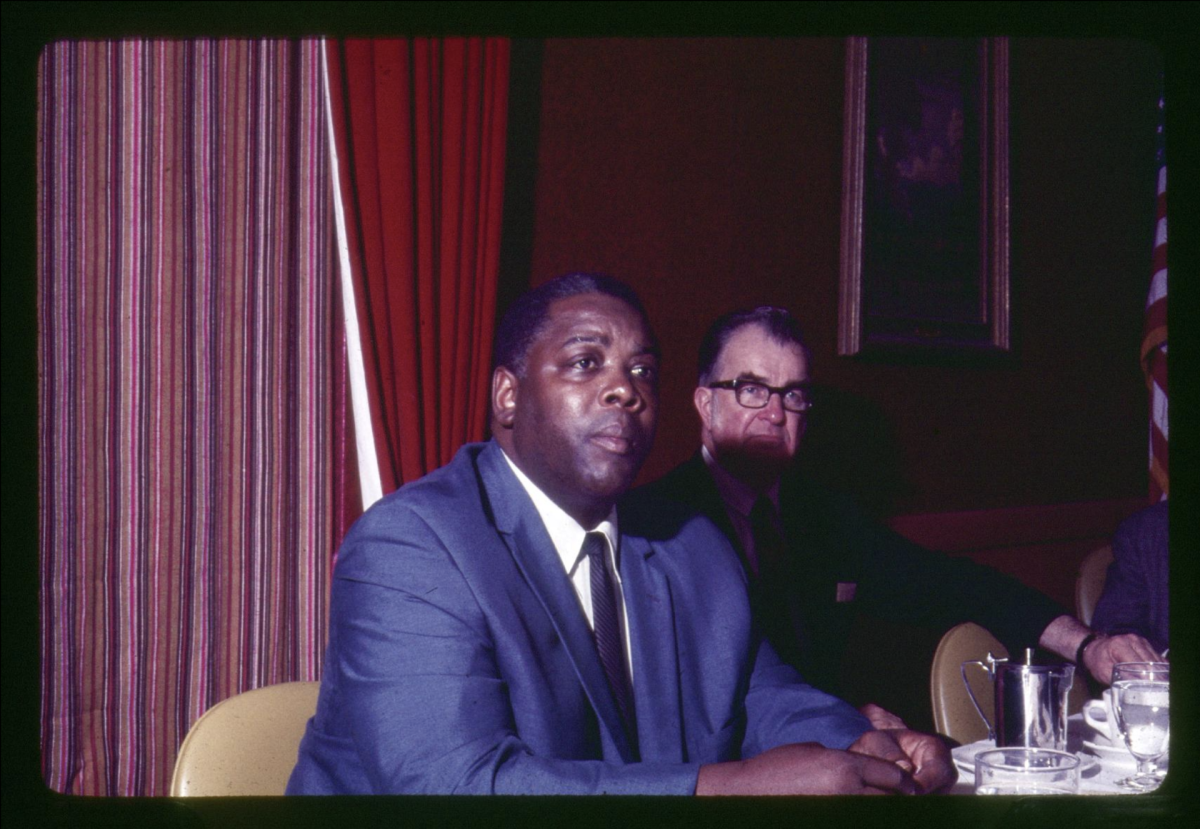
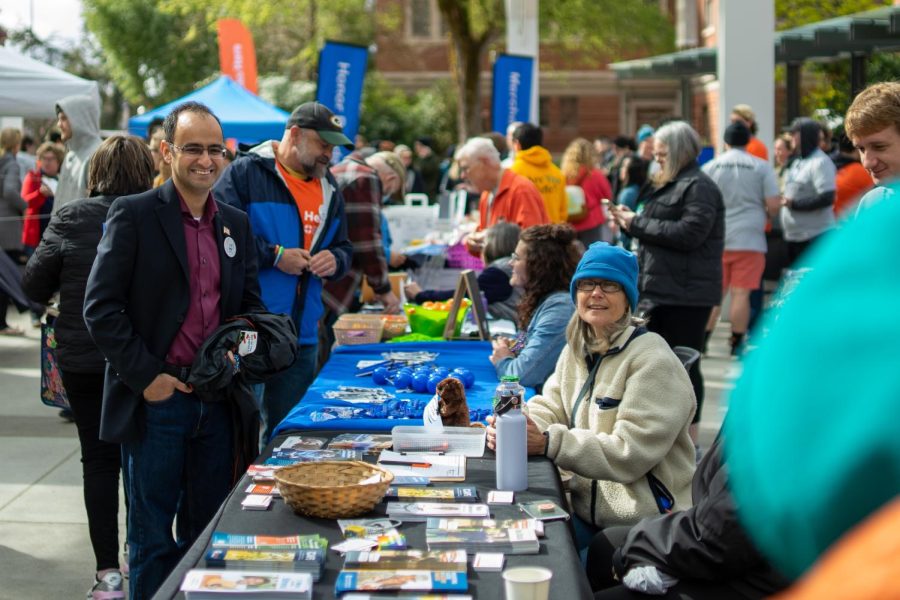
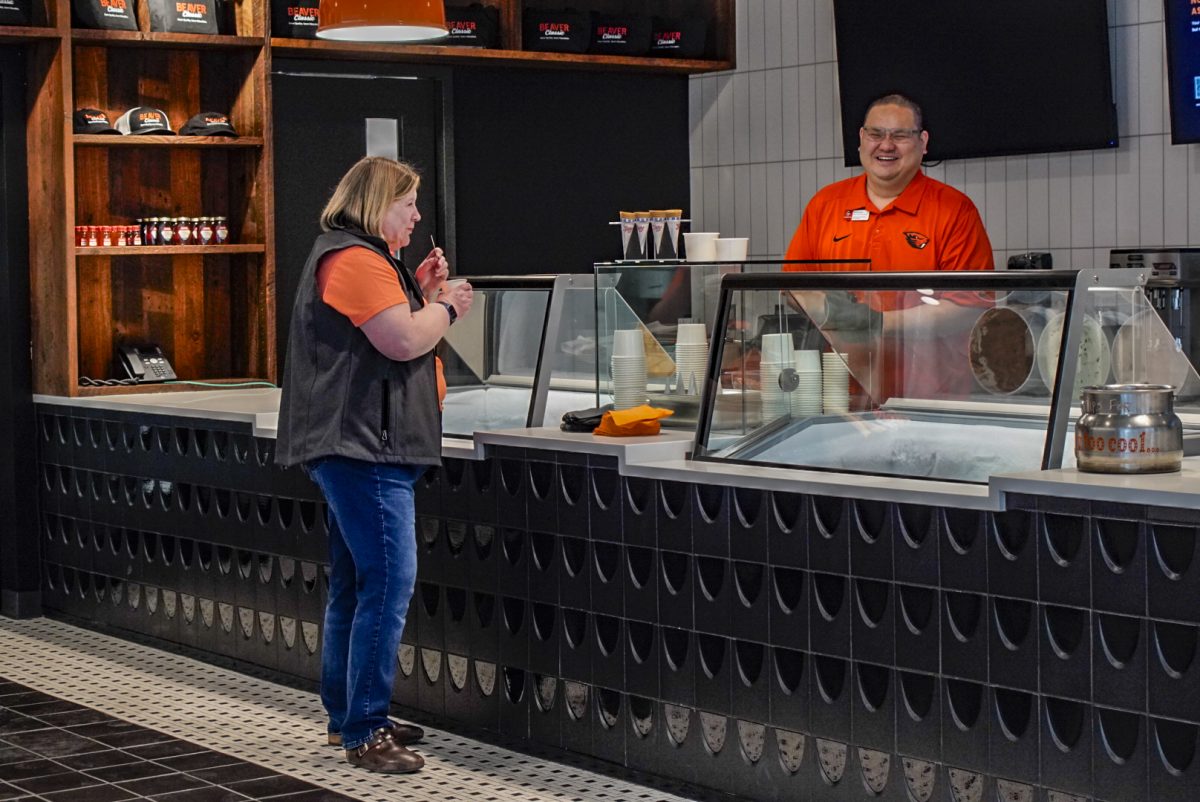







































































![Newspaper clipping from February 25, 1970 in the Daily Barometer showing an article written by Bob Allen, past Barometer Editor. This article was written to spotlight both the student body’s lack of participation with student government at the time in conjunction with their class representatives response. [It’s important to note ASOSU was not structured identically to today’s standards, likely having a president on behalf of each class work together as one entity as opposed to one president representing all classes.]](https://dailybaro.orangemedianetwork.com/wp-content/uploads/2025/03/Screenshot-2025-03-12-1.00.42-PM-e1741811160853.png)























